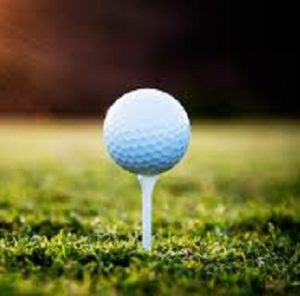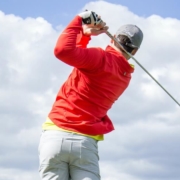More golf play, means more swings, and more injuries!
 Are you ready for some spring golf? Time to dust off your golf clubs, clean out your golf bag, and tee it up! As most golf injuries are due to overuse, proper warmup is essential for peak performance.
Are you ready for some spring golf? Time to dust off your golf clubs, clean out your golf bag, and tee it up! As most golf injuries are due to overuse, proper warmup is essential for peak performance.
Here are some of the most common golfing injuries:
Low Back Pain
The rotational stresses of the back swing can place a tremendous amount of pressure or strain on the spine, discs and muscles of the lower back. Because the swing is one direction, overtime this can lead to more serious problems of sciatica (pain down the leg) , disc injuries, and degenerative disc disease or osteoarthritis.
Regular chiropractic adjustments, spinal decompression,and myofascial release are all treatments that work well to stabilize the lower back and maintain a healthy spine and allow pain free range of motion.
Golfer’s Elbow
This injury also known as medial epicondylitis occurs when there is inflammation of the tendons on the inside of your elbow. Repetitive motion leads to pain and point tenderness at the elbow, and pain when striking the ball. Strengthening and stretching the forearm muscles, and slowing down your swing can help take some of the strain away. Try squeezing a tennis ball, or doing simple wrist curls and reverse wrist curls with a small hand weight. Shockwave and myofascial release are treatments that are fast and effective in helping heal up the tissues in that area.
Bursitis
Bursitis is a common injury in the elbow as well as the shoulder. The bursa is a fluid filled sac that acts as a cushion between the bone and skin. With overuse, it can become inflamed and swell, making range of motion very painful. RICE, rest, Ice, Compression and Elevation is a common the treatment for bursitis, as well as lase r and ultrasound to decrease the inflammation. Many people get bursitis and tendonitis mixed up and are unsure of the diagnosis. Dr. Crowle can evaluate the area and effective come up with a treatment plan for you.
Rotator Cuff Tendonitis
The shoulder is often affected in golf. People often experience pain when the arm is lifted away and overhead. Overtime tendonitis at the shoulder can make regular golfing very difficult. Some people with chronic shoulder issues develop Frozen Shoulder, where their range of motion is very painful and they are not able to lift their arm in the full range of motion above their head. Frozen shoulder is a long process and can take up to a year to regain full range of motion. Chiropractic adjustments, Shockwave and moyofascial release are all affective in relieving pain, and helping you to continue golfing as you are healing .
Other Repetitive Injuries
Many golfers experience knee pain due to the twisting of the swing, and the sideways force at the knee. Meniscus injuries, as well as osteoarthritis over time can cause problems in the knees.
Carpal Tunnel is inflammation of the nerves and soft tissue of the wrist and Dequervain’s tendonitis of the base of the the thumb are also prominent injuries in golf.
Tips on how to prevent these types of injuries:
Get to the course early. You need enough time to take care of your business in the golf shop, use the restroom, change your shoes, etc. Remember, your warmup routine sets the tempo for the day, so move slowly and relax.
Begin warming up on the putting green. Putting is 40-percent of golf and the putting stroke is the slowest and smoothest of all strokes in golf, and then spend the next 10 minutes hitting chips around the green with a tee as a target.
Begin your full swing warmup with stretching. Stretching can improve your range of motion and light calisthenics such as jogging or jumping jacks will help get the body prepared. Use your club to stretch your arms, shoulders and spine side to side and twisting.
Keep hydrated (water) on the course, and don’t ignore the early warning signs of pain and tenderness in these areas of your body. Overtime they can get worse and become chronic issues, and lead to arthritis and degeneration. Remember if you fail to warm up properly you are setting yourself up to fail when you play.
Having regular chiropractic adjustments and assessing the spine and extremities for weakness and imbalances can keep golfers injury free and back in the game.
Guest Article



Leave a Reply
Want to join the discussion?Feel free to contribute!